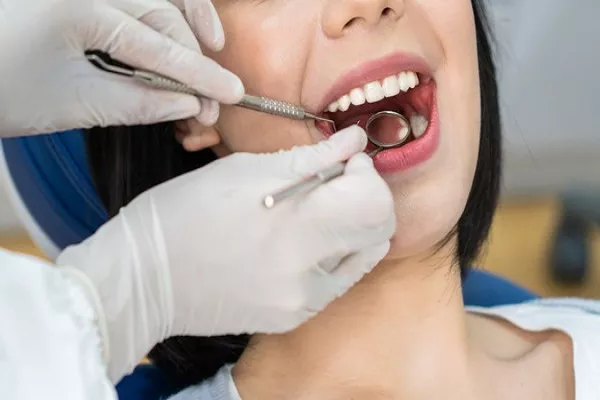Dental fillings are a common treatment for cavities, providing a durable and effective solution to restore the structural integrity of a tooth damaged by decay. However, a question often arises among dental patients: Can filled teeth still develop cavities? In this article, we will explore the factors that contribute to the risk of cavities in filled teeth, the importance of ongoing oral care, and how to prevent new cavities from forming.
Understanding Dental Fillings
Dental fillings are restorative materials used to repair teeth that have been affected by dental caries, commonly known as cavities. When a cavity is detected, a dentist will remove the decayed portion of the tooth and fill the resulting void with a dental filling material. The primary objectives of dental fillings are:
Restoration of Tooth Structure: Fillings restore the damaged tooth to its proper shape and function.
Prevention of Further Decay: Filling materials seal the cavity, preventing bacteria from re-entering and causing more decay.
Relief from Sensitivity and Pain: Filling a cavity can alleviate tooth sensitivity and pain associated with dental decay.
Types of Dental Fillings
Dental fillings are available in various materials, each with its advantages and considerations:
Amalgam Fillings: Amalgam fillings, often referred to as silver fillings, are composed of a mixture of metals. They are durable and cost-effective but less aesthetically pleasing.
Composite Fillings: Composite fillings are made of a tooth-colored resin material. They are aesthetically appealing and bond well to the tooth structure.
Ceramic Fillings: Ceramic fillings, also known as porcelain fillings, are highly aesthetic and offer excellent durability. They are well-suited for front teeth.
Glass Ionomer Fillings: Glass ionomer fillings are tooth-colored and release fluoride, making them suitable for certain situations, especially in pediatric dentistry.
Gold Fillings: Gold fillings are highly durable and biocompatible but less common due to their noticeable appearance.
Can Filled Teeth Still Develop Cavities?
While dental fillings effectively restore teeth damaged by cavities, it is still possible for filled teeth to develop new cavities under certain conditions. Here are some factors to consider:
Marginal Breakdown: Over time, the interface between the filling material and the natural tooth may weaken or break down. This can create gaps or openings where bacteria can infiltrate and cause new decay.
Inadequate Oral Hygiene: Maintaining good oral hygiene practices, such as regular brushing, flossing, and routine dental check-ups, is essential. Poor oral hygiene can lead to the accumulation of plaque and bacteria, increasing the risk of new cavities.
Dietary Choices: Sugary and acidic foods and beverages contribute to tooth decay. Even with fillings, excessive consumption of these items can lead to cavities in other areas of the mouth.
Dry Mouth: Conditions that reduce saliva flow, such as certain medications or medical conditions, can increase the risk of cavities, as saliva helps protect teeth from decay.
Bruxism: Teeth grinding or clenching, known as bruxism, can put additional stress on both natural teeth and fillings, potentially leading to cracks or openings where bacteria can enter.
Smoking and Tobacco Use: Tobacco use can have detrimental effects on oral health, increasing the risk of cavities and gum disease.
Preventing New Cavities in Filled Teeth
Preventing new cavities in filled teeth is crucial for maintaining oral health and preserving the longevity of dental restorations. Here are some tips to help prevent new cavities:
Maintain Good Oral Hygiene: Brush your teeth at least twice a day and floss daily to remove plaque and food particles.
Visit Your Dentist Regularly: Schedule routine dental check-ups and cleanings as recommended by your dentist to monitor the condition of your fillings and identify any potential issues early.
Watch Your Diet: Limit sugary and acidic foods and beverages, and opt for a balanced diet rich in fruits, vegetables, and dairy products.
Stay Hydrated: Drink plenty of water to help maintain a moist oral environment and support saliva production.
Consider Fluoride: Discuss fluoride treatments or the use of fluoride toothpaste with your dentist to strengthen tooth enamel.
Address Bruxism: If you grind or clench your teeth, consider a nightguard or other treatments to protect both natural teeth and fillings.
Quit Smoking and Tobacco Use: If you smoke or use tobacco, consider quitting to improve your overall oral health.
Conclusion
While dental fillings are effective in treating cavities and restoring teeth, it is possible for filled teeth to develop new cavities under specific circumstances. To minimize this risk, it is crucial to practice good oral hygiene, maintain regular dental check-ups, and make healthy lifestyle choices. By taking proactive steps and working closely with your dentist, you can help ensure that your filled teeth remain healthy and free from new cavities, allowing you to enjoy a lasting and beautiful smile.
Related Topics:




























